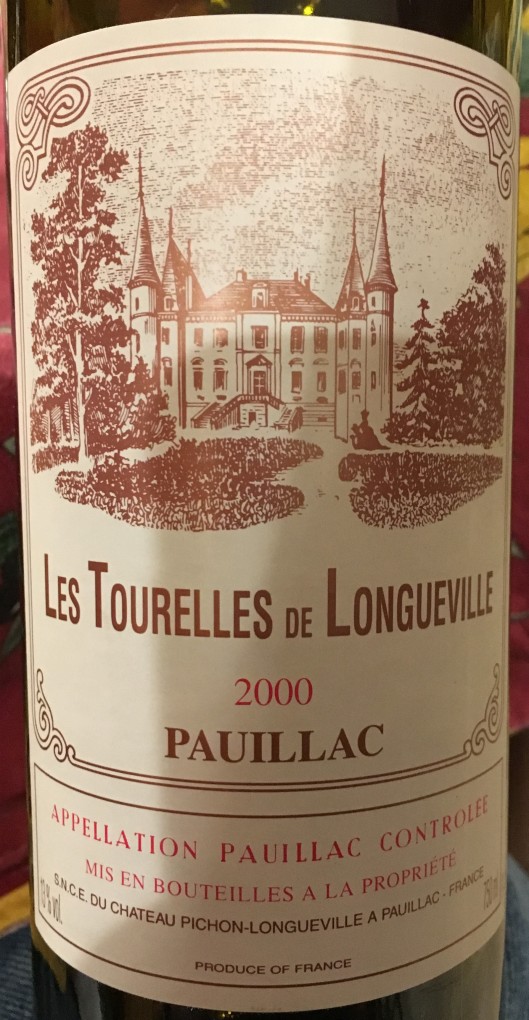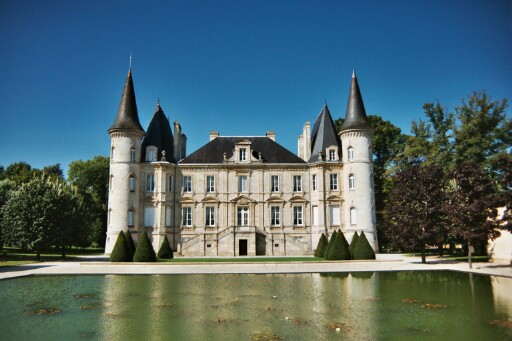
The 2000 vintage in Bordeaux was considered an exceptional vintage. It was mildly hyped, in comparison to many other vintages like 2005, which tended to keep prices moderate. The 2000 vintage was preceded and followed by vintages that were only considered “good quality” with less aging potential. This fact worked against the moderate prices, as demand for age-worthy wines increased. For the average wine consumer, buying “second labels” afforded some relief.
In the 2000 vintage, we purchased about twenty different producers that we felt represented good value. We employed the classic buying strategy – buy the “second labels” of noted properties. Turns out the strategy paid dividends, because among those producers purchased was the second label of Pauillac powerhouse Château Pichon Baron, known as Les Tourelles de Longueville.
Château Pichon Baron is a “second growth” wine in the famous classification of 1855. As such, the wine has extraordinary pedigree and generally produces wines of considerable structure and age-worthiness. The Château Pichon Baron website clearly states that their flagship wine “is a wine that improves year after year and can age for over 40 years in the cellar.” Age-worthy indeed.

Château Pichon Baron was once part of a much larger estate, owned by Pierre de Rauzan. In 1850, the estate was divided into two properties, Château Longueville au Baron de Pichon-Longueville and Château Pichon Longueville Comtesse de Lalande, or as they are commonly known: Château Pichon Baron and Château Pichon Lalande.
Château Pichon Baron has approximately 177 acres under vine, planted with 65% Cabernet-Sauvignon, 30% Merlot, 3% Cabernet Franc and 2% Petit Verdot. The vineyard is arranged into several plots, the best of which is called the “Butte de Pichon Baron.” The average age of the vines on this plot is 30 years. Grapes are harvested and sorted by hand, and then placed in stainless steel temperature controlled vats for an extended maceration of 20-30 days. Fermentation is conducted at between 82.4°F and 89.6°F, which is considered moderate and accounts for the perfumed nature of wine’s nose. The wine is finished and aged in oak barrels.
According to the Château Pichon Baron website, the second label Les Tourelles is composed mostly of Merlot taken from the Saint Anne plot, a lesser plot than the “Butte de Pichon Baron.” No matter, in a great vintage like 2000, even the lesser plots performed admirably. The reliance on Merlot certainly accounts for the roundness and smooth, integrated flavor of the Les Tourelles. The website claims a 15 year, or more, aging window. Recently tasted at 17 years and the wine is going strong. Although it tastes like the wine may have levelled off in terms of potential improvement, the wine possesses enough density and structure to continue to hold for many more years.
So, a look at the numbers… Château Pichon Baron was released in 2003 at approximately $100/bottle. Wine Spectator rated the wine at 93 points. Today, the wine can be found in many outlets in the US and it carries an average price of $264/bottle (164% increase). The wine was re-tasted by Wine Spectator in 2016 and scored a 94. Slightly improved.
Les Tourelles was also released in 2003 at approximately $20/bottle (we paid $24.64/bottle). Wine Spectator rated the wine at 88 points. Today, the wine can only be found in Trenton, NJ at $80/bottle (224% increase from our cost). The wine was never re-tasted by Wine Spectator, but our recent taste confirms that it is holding fast.
Looking at the numbers and judging by our most recent sample, I’m really glad we bought the case of Les Tourelles when we did. Now, while you can’t get the 2000 Les Tourelles anymore, unless you happen to have healthy disposable income and are convenient to Trenton, the moral of the story proves that the “second label” buying strategy in great vintages is sound and should be heeded. Why is this important? Because recent vintages in Bordeaux ARE available and the hype and prices are not getting any better… So buying second labels is an effective way of bringing great, age-worthy wine into the cellar without completely ruining the budget.


